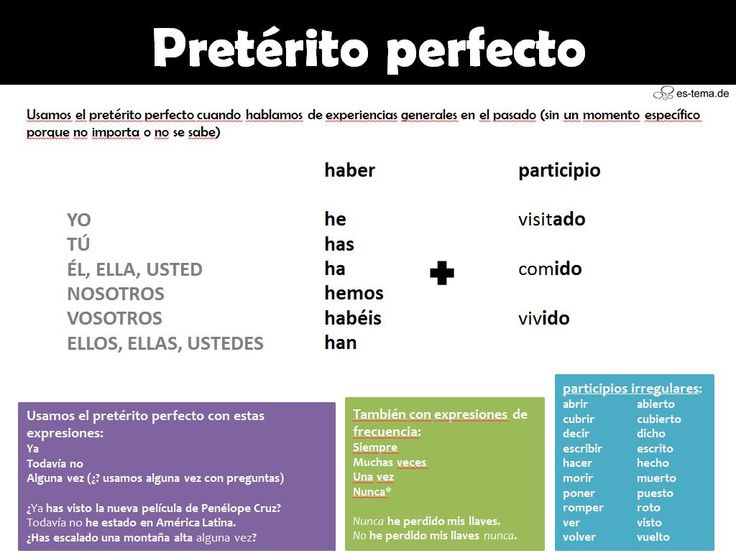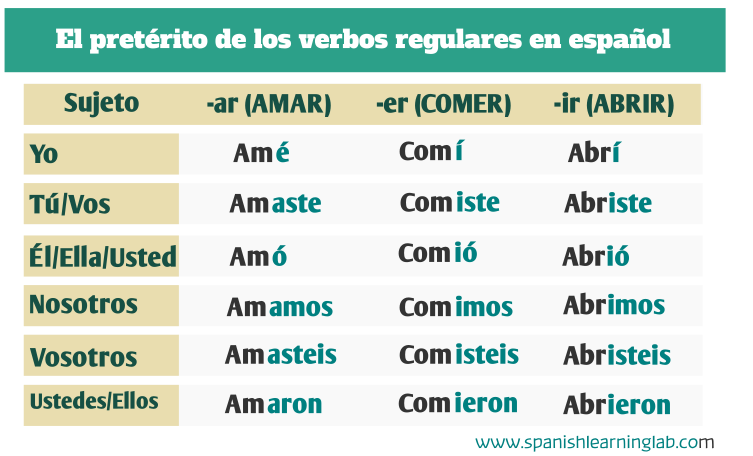Click to see all conjugation charts of llegar in every tense
In this Spanish conjugation lesson we will learn how to conjugate the verb llegar in the Pretérito tense of the Indicativo mood. It means we will see step by step how to create and translate forms of each grammatical person.
This lesson is specifically about the llegar conjugation. For an overview of Simple Tenses conjugation have a look at the Simple Tenses Conjugation Chart.
We also have a Video Presentation on how to conjugate verbs in Pretérito. It’s embedded below, but using the above link you can get more detailed information on conjugation in this tense and explanation of special cases and exceptions.
How to translate Pretérito to English
Note that the phrases in English provided below next to each conjugation are not direct translations from Spanish to English. They are usually the closest general equivalents. The example differences are:- In Spanish conjugation, there is the form usted in the third person singular. But this person does not translate to the English third person singular. It translates to the so called formal you and uses the inflected form which is most often represented as he/she/it in English conjugation charts.
- Similar situation happens in the third person plural, where ustedes translates to the English plural formal you but uses the form which corresponds to the they form in English.
- Tenses are used differently in Spanish and English, so the actual translation should always take into account the context and focus on translating the meaning, not just words.
- In both languages each verb may have multiple meanings and not every meaning translates directly to the other language. Here also, the context and focusing on the particular meaning helps to create the most accurate translation.
Note the timeline
The ability to accurately locate the desired position on the timeline is a crucial skill for proper choice of tenses. So note the timeline in our lessons and visualize it while speaking, listening, writing and reading. After some practice you’ll be able to select the right tense to use much easier.
Step by step instructions
Pretérito belongs to the simple tenses group, which means that all of the inflected forms are one word long. There are also compound (compuesto) tenses in the Spanish language, where each inflected verb form consists of two words.The verb llegar in the Pretérito tense of the Indicativo mood conjugates following the normal rules for its group (-ar), but requires one spelling correction. The spelling corrections are in most cases not considered irregularities because they are predictable and often happen only in spelling to match the pronounced forms. For example that includes corrections necessary to keep the same consonant sound before the letters e/i and a/o which influence the pronunciation of c, g, z and others. Other corrections are accent changes, adding or dropping letters, etc. The basis for the conjugation in this tense is the stem of the verb, so we have to begin by splitting the infinitive into a stem and an ending. It’s very easy to do. Simply remove two letters from the end of the infinitive to get the ending — one of -ar, -er or -ir. What’s left is the stem. So in case of the verb llegar it’s easy to see that:- the stem is: lleg-
- and the ending is: -ar
- yo llegé – I arrived
Because the pronunciation is different when the letter g is followed by a/o/u and different when followed by e/i, we need to change the spelling of the stem to preserve the pronunciation of the infinitive. If we add the letter u after the g, its pronunciation does not change and u is not pronounced in this combination.So add u after g to get llegué:
- yo llegué – I arrived
- tú llegaste – you arrived
- él llegó – he arrived
- ella llegó – she arrived
- usted llegó – (formal) you arrived
- nosotros llegamos – we arrived
- nosotras llegamos – (feminine) we arrived
- vosotros llegasteis – (plural) you arrived
- vosotras llegasteis – (feminine, plural) you arrived
- ellos llegaron – they arrived
- ellas llegaron – (feminine) they arrived
- ustedes llegaron – (formal, plural) you arrived
¡Ya está! The conjugation is now done. The final result looks as follows:
| yo | llegué | I arrived |
| tú | llegaste | you arrived |
| él/ella/usted | llegó | he/she/it arrived |
| nosotros/nosotras | llegamos | we arrived |
| vosotros/vosotras | llegasteis | you arrived |
| ellos/ellas/ustedes | llegaron | they arrived |
But do not end your session yet – it is very important to repeat and practice the material in order to remember it. Check below for example phrases and some links.
Example sentences
Ella ya estaba allí cuando yo llegué.
She was already there when I arrived.
Manuela acababa de cerrar la puerta cuando llegó Paco.
Manuela was just finishing closing the door when Paco arrived.
Next Steps to Perfection
|
Report a mistake | Give feedback
Thank you very much for making the effort to contact us!
We strive to provide the highest quality content and we greatly appreciate even the smallest suggestions:
We strive to provide the highest quality content and we greatly appreciate even the smallest suggestions:



